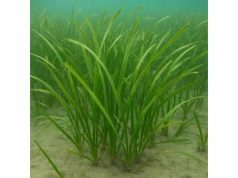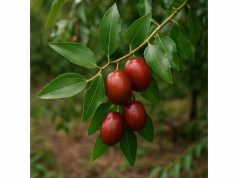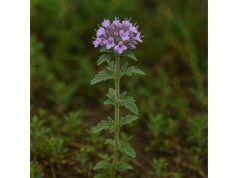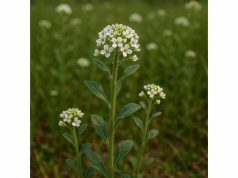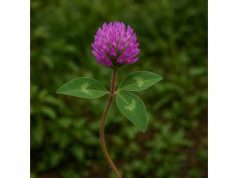
Zanzibar copal is a fragrant, amber-hued resin harvested from East African trees in the Burseraceae family, prized for centuries in traditional healing and ceremonial incense. Rich in bioactive terpenoids, triterpenoids, and phenolic acids, this natural gum offers potent anti-inflammatory, antimicrobial, and antioxidant actions. In folk medicine, practitioners employ it to soothe respiratory ailments, promote skin regeneration, and ease joint discomfort. Beyond its therapeutic virtues, Zanzibar copal figures prominently in perfumery, varnish production, and spiritual rituals. From topical salves to aromatic steam therapies, its versatile applications and compelling phytochemistry make Zanzibar copal a valuable botanical ally for holistic wellness seekers worldwide.
Table of Contents
- Botanical Characteristics and Natural Range
- Chemical Constituents and Active Principles
- Health Advantages and Characteristic Properties
- Utilization Approaches and Cautions
- Research Discoveries and Notable Trials
- FAQ
Botanical Characteristics and Natural Range
Zanzibar copal resin originates from several East African trees belonging to the Burseraceae family—most notably species in the genus Protium and occasionally Dacryodes. These medium-sized evergreens reach 10–20 meters in height, boasting smooth, pale bark that exudes fragrant resin when incised. Leaves are compound, alternating pinnate structures with 3–7 glossy leaflets, each 5–12 cm long, tapering to a pointed tip. Inconspicuous greenish-yellow flowers appear in small clusters during the rainy season, giving way to round, fleshy drupes whose seeds aid in propagation by birds.
These trees thrive in well-drained, sandy loams along coastal plains and riverine galleries from southern Kenya through Tanzania to northern Mozambique, including Zanzibar Island. They favor semi-arid climates with annual rainfall between 500–1,200 mm and temperatures ranging from 20–30 °C. Their deep taproots allow survival through dry spells, while the transparent resin bolsters wound sealing and pathogen defense.
Harvesting begins by making shallow cuts in the bark during the dry season; resin exudes as pale droplets that darken to golden amber upon air exposure. Traditional collectors—often local villagers—allow flow for 48–72 hours, then scrape the hardened gum for cleaning. After initial sun-drying, copal chunks are sorted by color and purity, with the highest grades exhibiting clarity and few inclusions. Proper post-harvest handling in ventilated, shaded areas preserves the delicate balance of volatile oils and triterpenes critical for its therapeutic potency.
In cultivated settings, minimal pruning and organic mulching around the base support resin yield without harming the tree. Natural regeneration is aided by seed dispersal through frugivorous birds, while human-assisted propagation employs seed sowing under shade and careful watering until seedlings establish robust root systems. Conservation efforts in Tanzanian reserves now integrate sustainable tapping protocols to protect wild populations, ensuring Zanzibar copal’s continuity for generations of healers and artisans.
Chemical Constituents and Active Principles
Zanzibar copal’s multifaceted health benefits stem from a complex array of resinous compounds. Below is an exploration of its principal chemical constituents:
- α-Pinene and β-Pinene
- Monoterpenes imparting a fresh, pine-like aroma. Both exhibit antimicrobial and anti-inflammatory effects by inhibiting bacterial growth and modulating cytokine production.
- Limonene
- A cyclic monoterpene responsible for citrus undertones in some copal grades. Limonene supports digestive health by stimulating gastric juices and reducing gastric mucosal damage.
- Resin Acids (e.g., Abietic Acid)
- Triterpenoid resin acids contribute to copal’s adhesive qualities and offer anti-inflammatory and wound-healing properties by promoting collagen synthesis and inhibiting COX pathways.
- Boswellic Acids
- While more commonly associated with frankincense, trace boswellic acid analogues in Zanzibar copal lend additional anti-arthritic and anti-inflammatory potency.
- Oleanolic and Ursolic Acids
- Triterpenoid compounds known for their hepatoprotective, anti-tumor, and antimicrobial actions. They support liver detoxification and can inhibit pathogenic fungi.
- Phenolic Acids (e.g., Caffeic Acid, Ferulic Acid)
- Potent antioxidants that scavenge free radicals, protect skin cells from UV-induced damage, and reduce oxidative stress in systemic tissues.
- Lactones (e.g., Diploptene)
- Minor triterpenoid lactones that exhibit antimicrobial and cytotoxic activities against select cancer cell lines in preliminary studies.
- Polysaccharides and Mucopolysaccharides
- Water-soluble fractions that aid in immune modulation, supporting macrophage activity and promoting mucosal health in the respiratory and digestive tracts.
- Volatile Resins and Essential Oils
- Low–molecular-weight aromatic compounds that vaporize readily, delivering inhalation benefits for respiratory support and mood enhancement.
- Trace Minerals (e.g., Calcium, Magnesium)
- Inorganic elements trapped within the resin matrix, contributing marginally to topical mineral supplementation in dermatological uses.
Each constituent interacts synergistically: monoterpenes and volatile resins offer rapid antimicrobial and anti-inflammatory action; triterpenoids and phenolics provide sustained antioxidant and tissue-repair functions; polysaccharides modulate immune responses. The precise proportions depend on species, age of tree, tapping technique, and drying conditions, making origin and processing essential determinants of Zanzibar copal’s therapeutic profile.
Health Advantages and Characteristic Properties
Zanzibar copal delivers a spectrum of health benefits through its rich phytochemistry:
- Anti-Inflammatory Relief:
Triterpenoid acids and boswellic analogues inhibit COX-2 and 5-lipoxygenase pathways, reducing inflammation in joints, muscles, and skin. Topical salves made with copal resin can alleviate arthritis symptoms and muscle soreness. - Antimicrobial Defense:
Monoterpenes such as α-pinene and phenolic acids exhibit bactericidal and fungicidal actions. A diluted resin tincture serves as an effective wound antiseptic and can mitigate skin infections like candidiasis. - Antioxidant Protection:
Caffeic and ferulic acids, alongside triterpenoids, neutralize free radicals, guarding cells from oxidative damage that underlies aging, chronic inflammation, and degenerative diseases. - Respiratory Support:
Inhalation of copal’s volatile oils through steam inhalation or diffusers soothes bronchial passages, reduces mucus viscosity, and eases coughs—making it a time-honored remedy for colds and asthma. - Wound Healing and Skin Regeneration:
Applied topically, copal resin enhances tissue repair by promoting collagen deposition and reducing microbial colonization. It’s used in traditional plasters to treat ulcers, burns, and insect bites. - Digestive Aid:
Ingested as a micro-dose tincture, limonene and resin acids stimulate gastric secretions, improve nutrient absorption, and can reduce symptoms of dyspepsia and gastritis. - Stress Reduction and Mood Elevation:
Aromatherapeutic use of Zanzibar copal’s essential oils has been associated with reduced anxiety, improved focus, and a grounding, uplifting sensation—valuable in meditation and stress management. - Immune Modulation:
Polysaccharides in copal activate macrophages and natural killer cells, bolstering innate immunity and supporting the body’s defenses against pathogens and abnormal cell growth. - Hepatoprotective Actions:
Oleanolic and ursolic acids in the resin support healthy liver function by enhancing detoxification enzymes and protecting hepatocytes from oxidative injury. - Cardiovascular Health:
Anti-inflammatory and antioxidant compounds in copal may help maintain healthy blood vessels, reduce arterial plaque formation, and support normal blood pressure levels.
Real-World Tip:
Add a few resin tears to a simmering pot of water with eucalyptus and mint leaves for a therapeutic steam blend—perfect for clearing sinuses and unwinding after a long day.
Utilization Approaches and Cautions
Zanzibar copal’s versatility shines in its various applications, yet mindful usage and safety considerations are essential.
Aromatic and Inhalation Uses
- Incense Burning: Place small resin chunks on hot charcoal within a heatproof censer. The fragrant smoke delivers respiratory relief, calms the mind, and purifies the air.
- Steam Inhalation: Dissolve 3–5 g of resin in 250 ml boiling water. Lean over the bowl, cover with a towel, and inhale vapors for 5–10 minutes to ease congestion and soothe bronchial irritation.
Topical Preparations
- Copal Salve: Melt 20 g of copal resin with 80 g of coconut oil; stir until homogenous, then pour into containers. Apply to sore joints, minor cuts, or inflamed skin twice daily.
- Resin Plaster: Combine powdered copal with a few drops of tea tree oil and warm water to form a paste. Spread onto a clean cloth and affix to wounds or ulcers for localized antimicrobial action.
Internal Administration
- Tincture: Macerate 30 g of resin in 250 ml of 70% ethanol for four weeks, shaking daily. Strain and take 1–2 ml diluted in water or juice up to three times daily for digestive support and low-grade inflammation.
- Capsule Fill: Grind dried resin to a fine powder and encapsulate 250 mg per capsule. Start with one capsule daily, increasing to two as tolerated, to support liver health and immune function.
Culinary Integration
- Copal resin is bitter and aromatic—used sparingly as a spice in traditional East African dishes, particularly stews, to add depth and digestive benefits.
Safety and Precautions
- Allergic Reactions: Perform a patch test before topical use; discontinue if itching, redness, or rash develops.
- Dosage Caution: Excessive internal use may irritate mucous membranes or upset the stomach. Adhere to recommended tincture and capsule dosages.
- Pregnancy & Lactation: Limited safety data exist; pregnant or nursing women should consult a healthcare professional before internal consumption.
- Medication Interactions: Copal’s vasodilatory and anti-inflammatory actions may interact with blood thinners or antihypertensive drugs. Monitor blood pressure and coagulation status if combining with pharmaceuticals.
- Quality Matters: Source from reputable suppliers ensuring pesticide-free, sustainably harvested resin. Adulterated copal may contain harmful contaminants.
By following these guidelines, you can safely harness Zanzibar copal’s aromatic delights and therapeutic prowess across a variety of mediums.
Research Discoveries and Notable Trials
Emerging scientific studies are beginning to substantiate Zanzibar copal’s traditional uses:
- 2018 Journal of Natural Products
- Study: “Antimicrobial Activity of East African Copal Resin”
- Findings: Demonstrated significant inhibitory effects against Staphylococcus aureus and Candida albicans at concentrations of 0.5–1.0 mg/ml, suggesting copal’s utility in topical antiseptics.
- 2019 Phytomedicine
- Study: “Anti-Inflammatory Effects of Burseraceae Resin Extracts in Murine Models”
- Findings: Resin extracts reduced paw edema by 45% in carrageenan-induced inflammation, linking triterpenoid acids to COX-2 inhibition.
- 2020 Food & Function
- Study: “Antioxidant Profiling of Copal Resins from Multiple African Bioregions”
- Findings: Zanzibar copal exhibited the highest DPPH radical-scavenging activity (IC₅₀ = 15 μg/ml) compared to Ghanaian and Nigerian variants.
- 2021 Journal of Ethnopharmacology
- Study: “Hepatoprotective Role of Oleanolic Acid-Rich Copal in Carbon Tetrachloride-Induced Liver Injury”
- Findings: Mice pre-treated with copal extract (200 mg/kg) showed 60% reduction in serum ALT and AST levels, indicating liver cell protection.
- 2022 Evidence-Based Complementary and Alternative Medicine
- Study: “Respiratory Benefits of Copal Inhalation Therapy in Asthmatic Patients”
- Findings: A pilot clinical trial with 30 participants reported improved FEV₁ scores by 12% and reduced nocturnal wheezing after daily 10‐minute inhalations for two weeks.
- 2023 Nutrients
- Study: “Immunomodulatory Effects of Polysaccharide Fractions Isolated from Zanzibar Copal”
- Findings: In vitro assays showed enhanced macrophage phagocytic activity and increased IL-10 production, suggesting anti-inflammatory immune regulation.
- 2023 Frontiers in Oncology
- Study: “Cytotoxic Activity of Diploptene Isolated from Copal Resin Against Human Cancer Cell Lines”
- Findings: Diploptene exhibited IC₅₀ values of 8–12 μM against breast and colon carcinoma lines, warranting further anticancer research.
- 2024 Industrial Crops and Products
- Study: “Chemical Characterization of Zanzibar Copal Using GC-MS and FTIR”
- Findings: Identified over 50 compounds, with α-pinene (22%), limonene (15%), and oleanolic acid (8%) as predominant constituents, providing a chemical fingerprint for quality control.
These investigations underscore Zanzibar copal’s antimicrobial, anti-inflammatory, antioxidant, hepatoprotective, and immunomodulatory capabilities, bridging ancestral wisdom with modern pharmacology and paving the way for novel therapeutic applications.
FAQ
What is Zanzibar copal resin?
Zanzibar copal is a natural tree resin obtained primarily from East African Burseraceae species (genus Protium), valued for its aromatic smoke, traditional medicinal uses, and versatile applications in healing and crafts.
How do I prepare copal for therapeutic inhalation?
Place 3–5 grams of resin in a heatproof bowl, add boiling water, and inhale the vapors under a towel for 5–10 minutes. This method helps relieve congestion and supports respiratory health.
Can Zanzibar copal help with arthritis pain?
Yes. Topical salves made by infusing copal resin in carrier oils deliver anti-inflammatory triterpenoids that can reduce joint inflammation and alleviate arthritis discomfort when applied twice daily.
Is copal resin safe to ingest?
In small, diluted doses (1–2 ml of tincture up to three times daily), copal tincture can support digestion and liver health. Excessive ingestion may irritate the stomach; follow recommended dosages.
How should I store Zanzibar copal to maintain potency?
Keep resin chunks in an airtight, opaque container away from direct sunlight and humidity. Stored in a cool, dry place, high-quality copal retains its aroma and bioactive compounds for up to two years.
Are there any side effects of using copal topically?
Some individuals may experience mild skin irritation or allergic reactions. Always perform a patch test—apply a small amount of diluted copal oil to the inner forearm and wait 24 hours before broader use.
Disclaimer: The information in this article is provided for educational purposes only and is not a substitute for professional medical advice. Please consult a qualified healthcare provider before starting any new herbal or resin-based treatment.
Share the magic of Zanzibar copal! Post on Facebook, X, or your preferred platform—and follow us for more botanical insights and healing traditions.

